Glacial sedimentsThe sediments associated with Wright Lower Glacier are markedly different from temperate and polythermal glaciers. Sand and sandy gravel are the dominant “facies” (sediment types), and poorly sorted sediments such as diamicton that are indicative of wet-based glacier conditions are absent. Similarly, the landforms are also unique. All these features indicate that cold glaciers like this are active geomorphological agents, in contrast to the general view that cold glaciers protect their beds. Glaciers and the bordering sediment-landform associations such as these have been used as an extreme analogue of conditions that prevailed during the Snowball Earth events of Neoproterozoic (late Precambrian) time. |
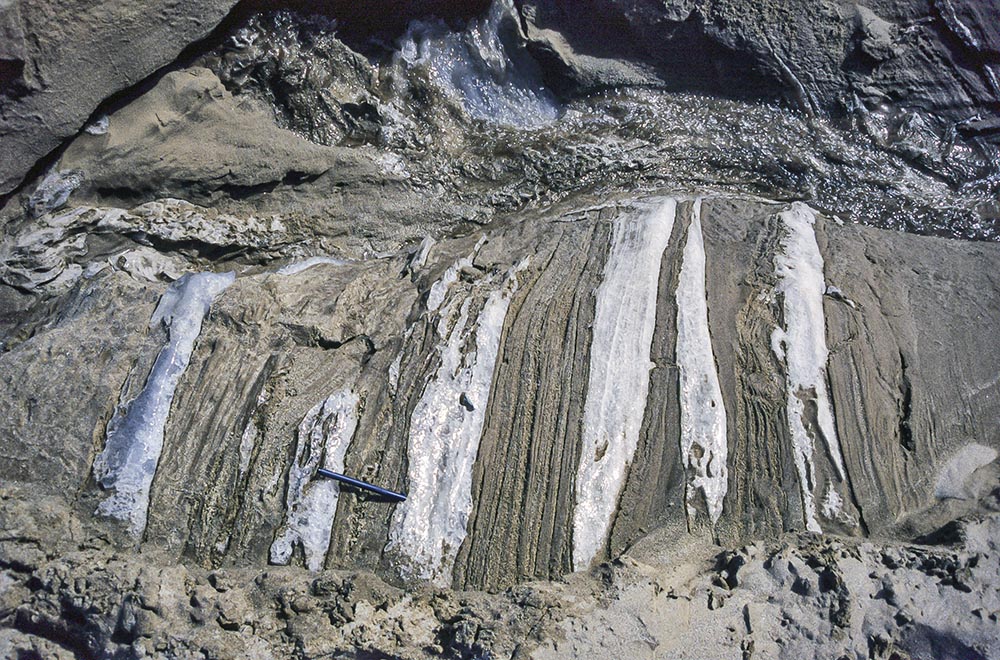 Fluvial sand facies with glacier ice layers, incorporated into the glacier margin’s sediment ramp by glaciotectonic deformation. | 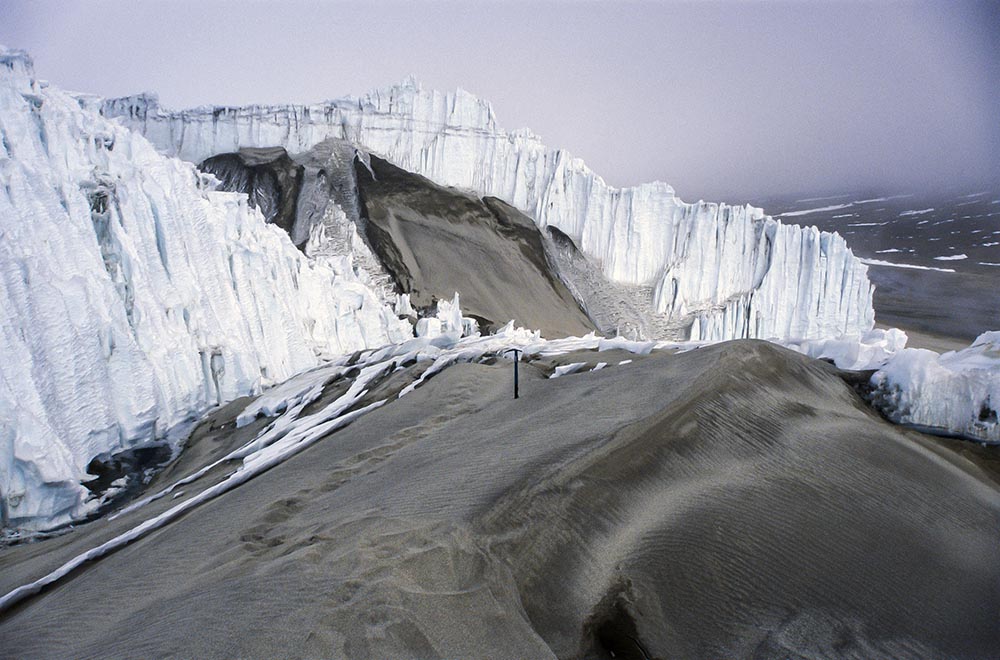 Large amounts of aeolian sand drape the glaciotectonised ramp, with some of it being incorporated in the deforming ice along with fluvial sediment. | 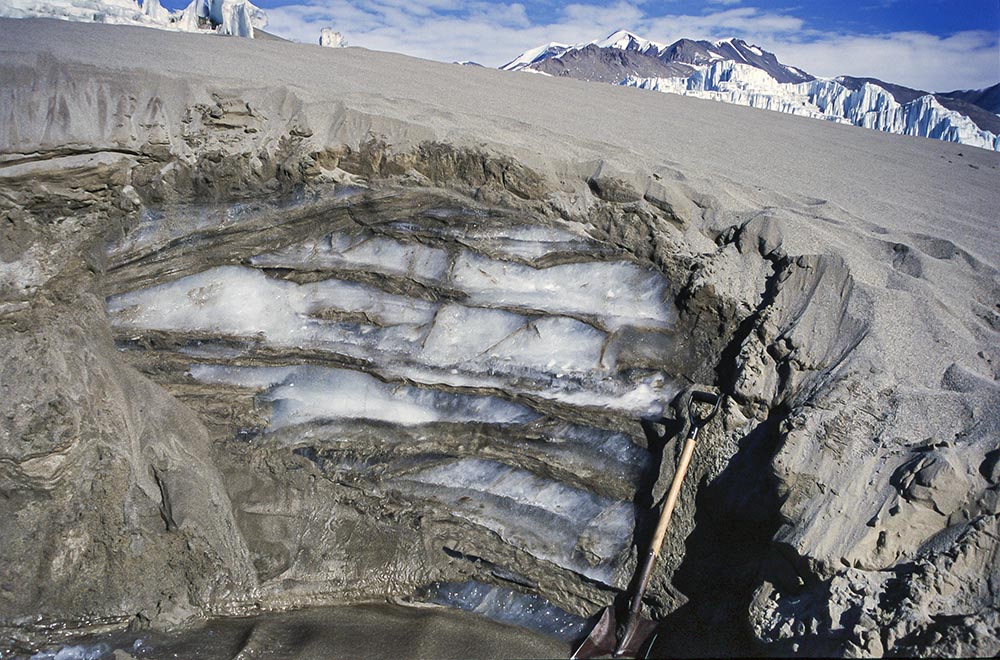 Gently dipping fluvial sand layers, interbedded with glacier ice, and capped by aeolian sand, in the middle part of the glacier-marginal ramp. Runoff from the glacier incised gullies that allow observations of the internal structure of this unusual feature. | 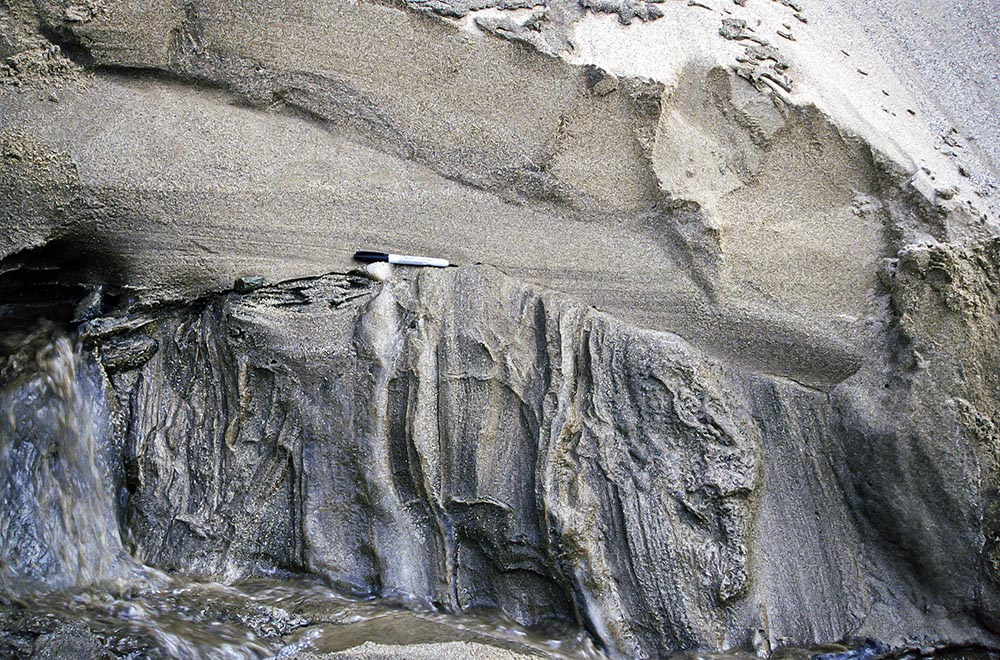 Steeply dipping fluvial sand layers, within foliated glacier ice, and capped unconformably by aeolian sand, in the upper part of the ramp. Note the geometrical contrast with the previous photo. |
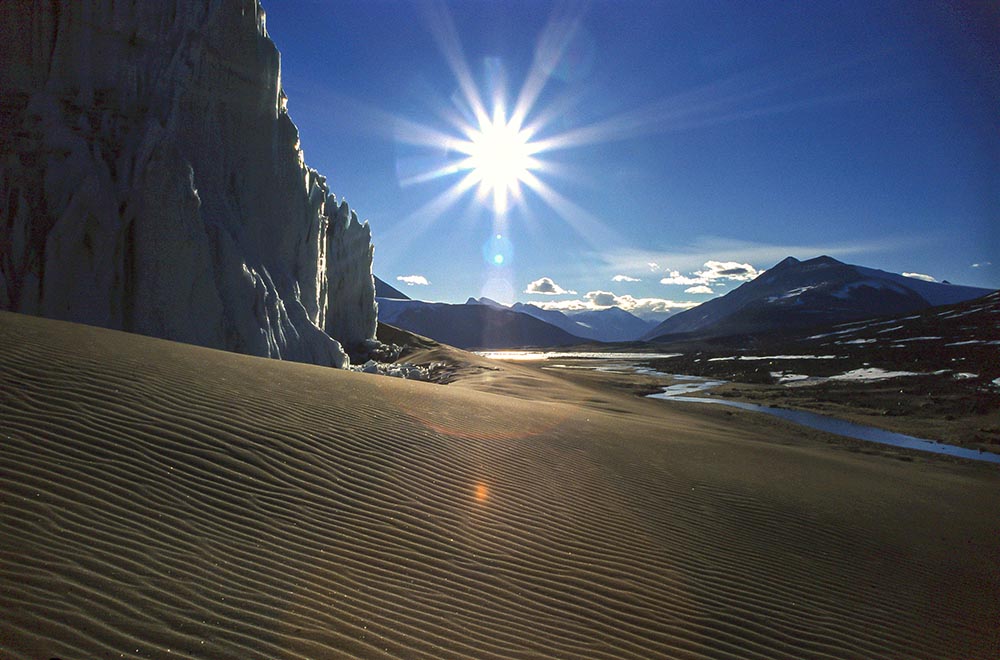 Aeolian sand with wind-generated ripples, on an undisturbed part of the ramp, looking towards Onyx River and Lake Brownworth. | 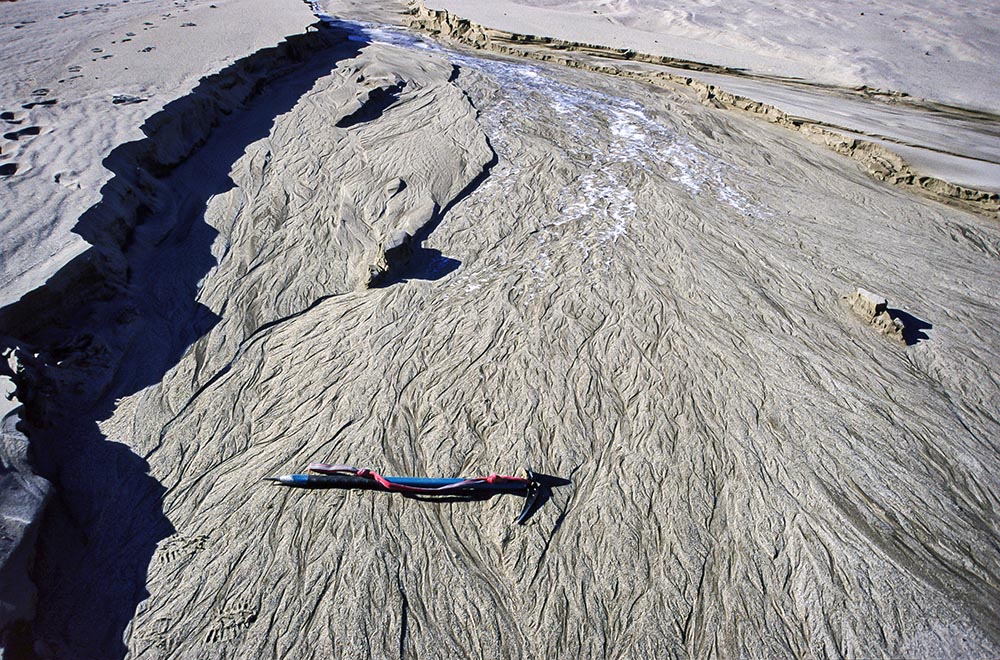 The foot of one of the gullies cut by supraglacial runoff from the glacier. As it opens out onto flat ground a striking small-scale braided channel system has developed. The sediment is a combination of glaciotectonised fluvial sand and aeolian sand, reworked once more by fluvial processes. Ice axe for scale. | 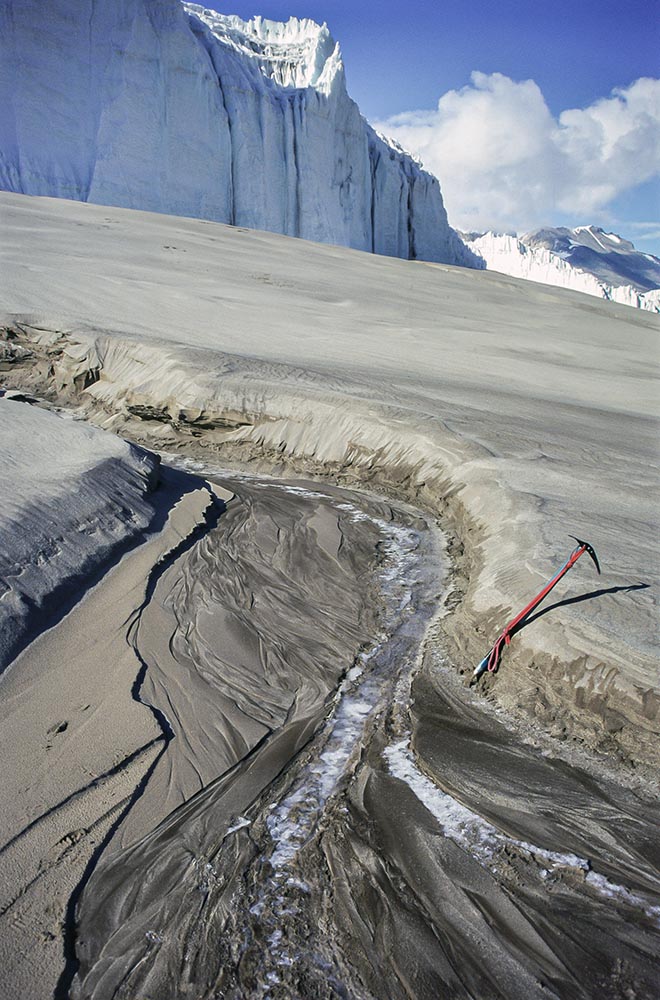 Complex braiding, down-cutting and refreezing in a gully below the glacier margin cliffs. | 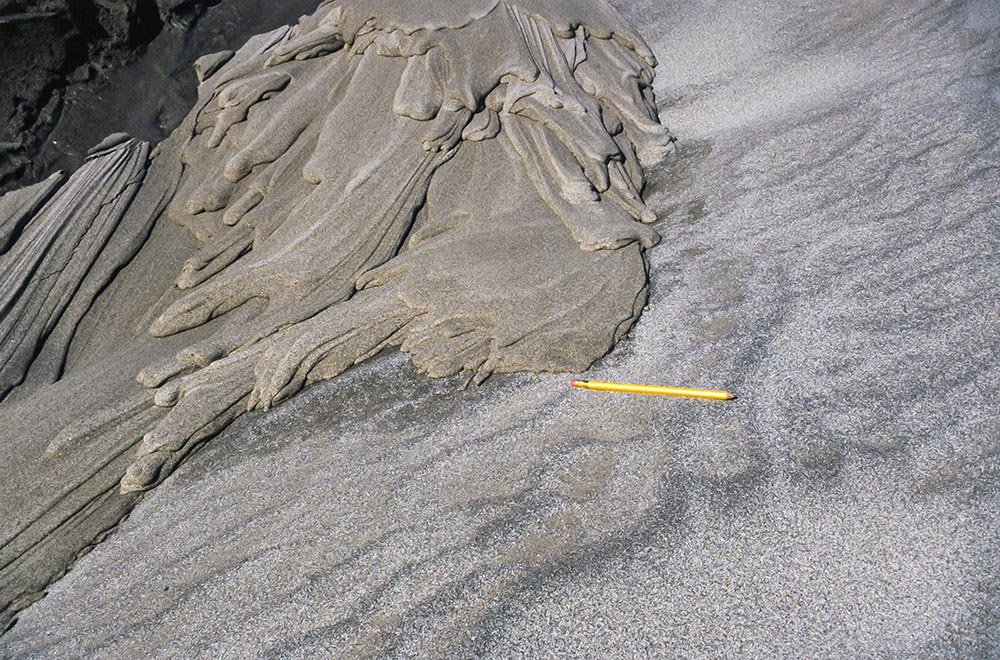 A small debris flow of reworked aeolian sand. Individual lobes of sediment represent pulses of flow when saturated. |
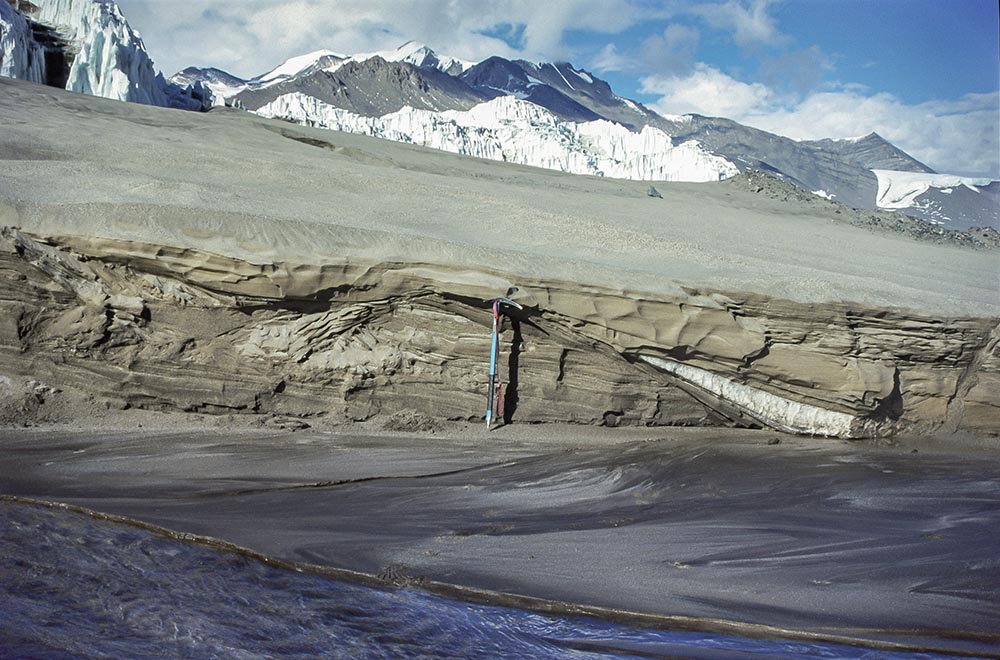 Cross-section through lower part of ramp, where uneven fluvial sediment is slightly deformed, and contains ice lenses, and is overlain with aeolian sand draped over the uneven surface of the fluvial sediment. | 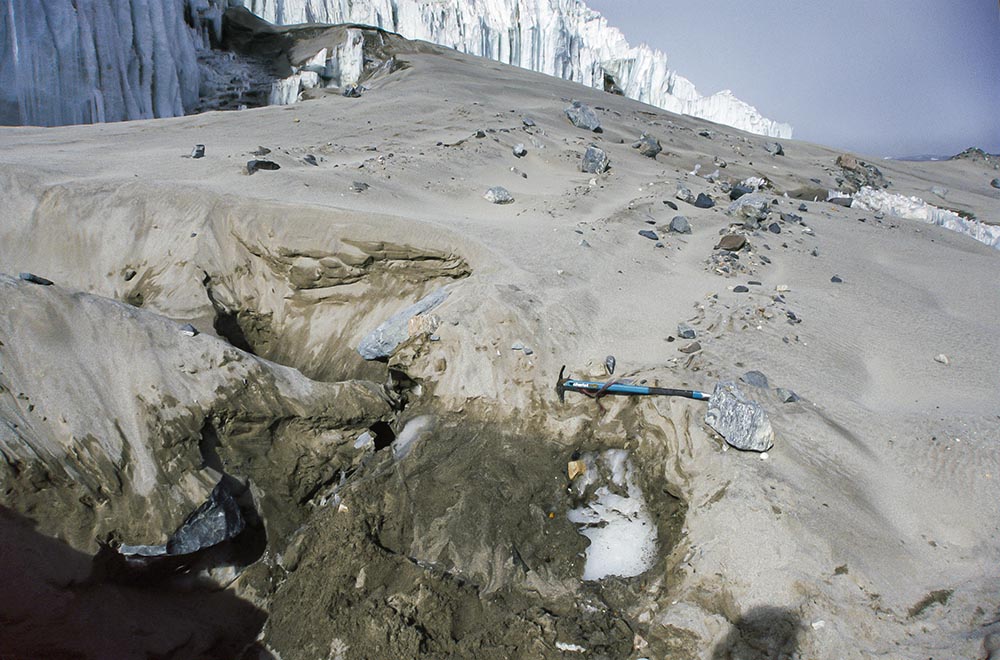 Towards the southeast margin of the glacier, the ramp contains coarser morainic debris among the aeolian and fluvial sediments. The debris consists of a wide range of lithologies, probably brought down from the Transantarctic Mountains by earlier expansions of the East Antarctic Ice Sheet. | 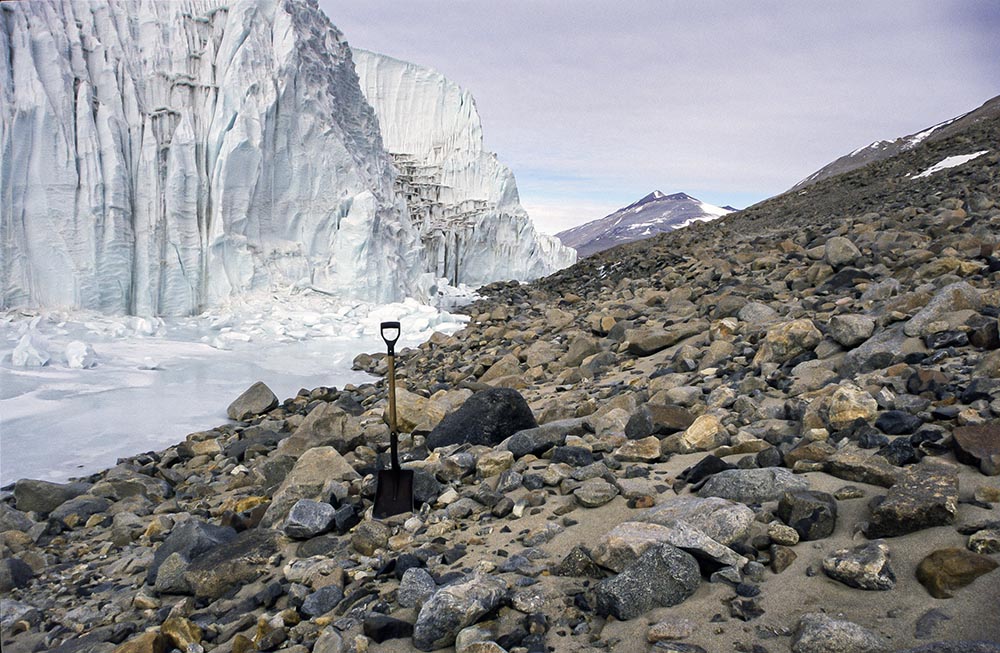 At the northwest margin, against the steep mountainside, old boulder morainic debris from expansions of the East Antarctic Ice Sheet drapes the surface, and is encroached by the margin of Wright Lower Glacier. | 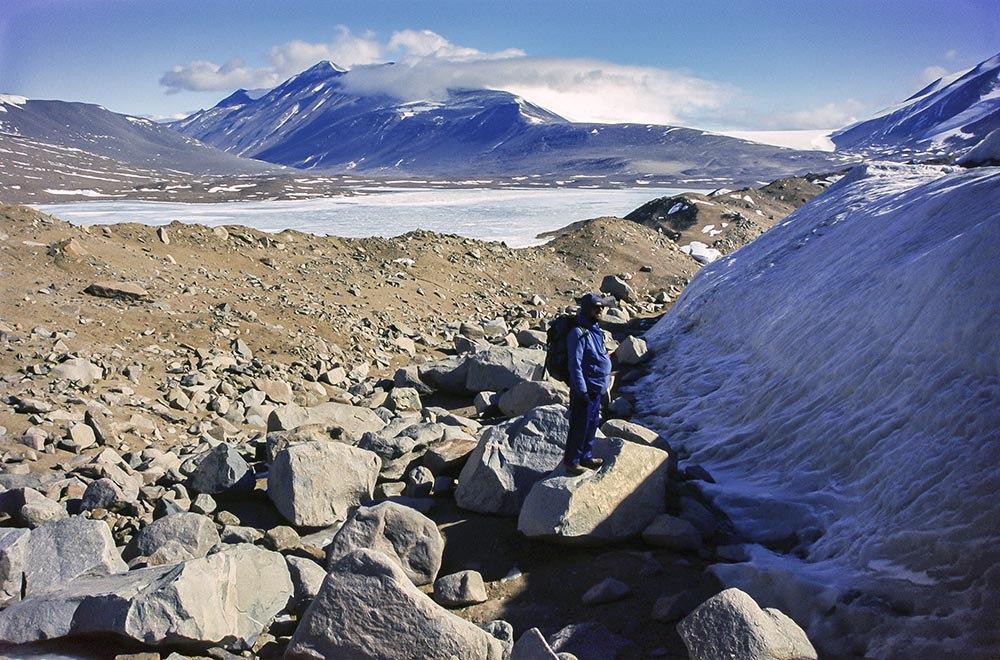 A prominent moraine adjacent to Wright Lower Glacier is a feature of the southeast margin. It contains sand to boulder-sized material, and includes clusters of angular Ferrar Dolerite of local origin. The boulders are mainly angular, but some have had their corners rounded by wind action. Lake Brownworth is behind the moraine. |